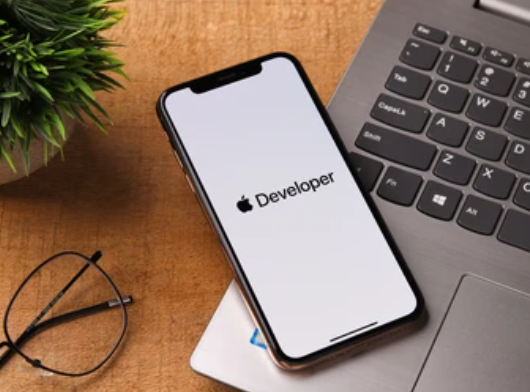Mobile App Development for iOS: Essential Tips and Tools
When it comes to mobile app development for iOS, there are several essential tips and tools that can help developers create high-quality, user-friendly apps. Here's a detailed explanation of some key tips and tools for iOS app development:
Tips for iOS App Development:
Follow Apple's Design Guidelines:
Apple provides comprehensive design guidelines called Human Interface Guidelines (HIG) that outline the best practices for creating visually appealing and intuitive iOS apps. Adhering to these guidelines ensures consistency, familiarity, and a seamless user experience across iOS devices.
Understand iOS Architecture:
Familiarize yourself with the iOS app architecture, which includes concepts like View Controllers, Storyboards, Delegates, and App Lifecycles. Understanding these core concepts helps in structuring your app's codebase, managing UI components, handling data, and implementing app navigation effectively.
Use Swift Programming Language:
Swift is Apple's recommended programming language for iOS app development. It offers a modern, concise, and safe syntax, which simplifies development and improves app performance. Swift provides features like optionals, type inference, and memory management, making it easier to write clean and robust code.
Implement Responsive Design:
iOS devices come in various screen sizes and resolutions. Design your app with responsive layouts and adaptivity in mind, ensuring it looks and functions well across different iOS devices. Utilize Auto Layout and Size Classes to handle dynamic layouts and accommodate different screen sizes.
Test Extensively:
Thoroughly test your app across different iOS versions, devices, and orientations to ensure compatibility and a bug-free experience. Use Apple's Xcode Simulator for initial testing and then conduct real-device testing to validate app behavior, performance, and responsiveness.
Optimize Performance:
iOS users expect fast and responsive apps. Optimize your app's performance by following best practices, such as minimizing network requests, using asynchronous operations, optimizing image sizes, and implementing efficient algorithms. Use Apple's performance profiling tools like Instruments to identify bottlenecks and optimize your code.
Prioritize Security:
iOS apps should prioritize user data security. Implement secure coding practices, use secure communication protocols (like HTTPS), handle sensitive data appropriately, and follow Apple's guidelines for data storage and encryption. Regularly update your app with security patches to protect against potential vulnerabilities.
Utilize Apple's Developer Resources:
Apple provides a wealth of developer resources, including documentation, sample code, tutorials, and videos. Explore the Apple Developer website, Apple Developer Documentation, and WWDC (Apple's annual developer conference) videos to stay updated with the latest iOS development practices, frameworks, and technologies.
Essential Tools for iOS App Development:
Xcode:
Xcode is Apple's integrated development environment (IDE) specifically designed for iOS app development. It includes a suite of tools, such as a code editor, graphical interface builder, testing and debugging tools, performance analyzers, and simulators. Xcode is essential for building, testing, and deploying iOS apps.
Interface Builder:
Interface Builder is a graphical tool within Xcode for designing user interfaces using drag-and-drop components. It allows developers to visually create UI elements, layout constraints, and storyboard-based app flows. Interface Builder simplifies UI design and saves development time.
CocoaPods and Swift Package Manager:
CocoaPods and Swift Package Manager are dependency management tools for iOS app development. They simplify the process of integrating third-party libraries, frameworks, and dependencies into your app. These tools handle version management, dependency resolution, and project configuration, making it easier to incorporate external code into your app.
TestFlight:
TestFlight is Apple's beta testing platform that allows developers to distribute pre-release versions of their app to testers. It enables developers to collect valuable feedback, identify bugs, and ensure app stability before releasing it to the App Store. TestFlight simplifies the beta testing process and helps improve the overall app quality.
Firebase:
Firebase is a powerful mobile app development platform provided by Google. It offers a range of services for iOS app development, including cloud storage, real-time database, authentication, crash reporting, analytics, and more. Firebase simplifies backend development tasks and provides scalable and reliable cloud infrastructure for iOS apps.
GitHub:
GitHub is a widely used version control platform that allows developers to collaborate, manage code repositories, and track changes in their app's source code. It provides a central repository to manage code versions, work on features concurrently, and facilitate team collaboration.
App Store Connect:
App Store Connect is Apple's platform for managing and distributing iOS apps on the App Store. It enables developers to submit apps, manage app metadata, track app performance, and monitor user reviews and ratings. App Store Connect is essential for publishing and managing your app's presence on the App Store.
By following these tips and utilizing the recommended tools, developers can create high-quality, feature-rich iOS apps that provide an exceptional user experience and meet Apple's guidelines. Continuously learning and staying updated with the latest iOS development trends and practices will help you build successful iOS applications.












